Lisa Niver's Blog: We Said Go Travel, page 444
December 9, 2013
The Charming Seaside Town of St Ives
Located in the far southwestern county of Cornwall, the town of St. Ives is one of England’s best coastal towns to vacation at and is gaining popularity on the international scene as well. It was even named the best seaside town of 2007 by the Guardian Newspaper. The charming town is located right on the seaside and offers breathtaking coastal scenery, no matter what time of the year you decide to visit. Historically, St. Ives is a fishing village and today, fishing boats can commonly be seen bobbing up and down in the harbor. The most popular activity is to visit one of the many golden sand beaches that is on offer, never very far away from the city center. After laying about in the sun for a few hours, many tourists decide to wander around the city center, where winding cobble stone streets offer treasures to be found all around the city, such as independent shops, museums, restaurants and art galleries.
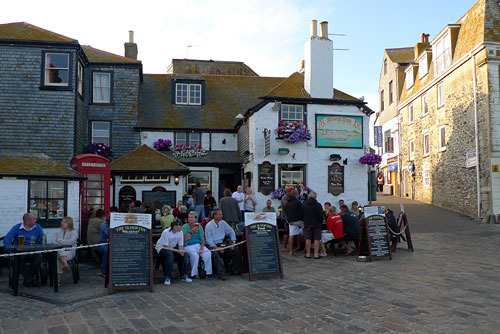
One of the many cobblestone streets St. Ives has to offer
Seeing this pleasant town by foot is by far the most popular way to get around, as many of the streets are too narrow for cars to drive through. Exploring the meandering cobble stone streets by foot is a good way to really appreciate everything that St. Ives has to offer. Stumbling upon historical sites and unique art is inevitable as nearly every turn or curve in the road has something to offer. The town was founded in 1639 and has become known for the number of artists that have called St. Ives home. This has led to many art galleries being opened, as well as museums that showcase local history and culture.
St. Ives has a wide variety of accommodation, such as hotels, guesthouses and hostels. For a truly unique experience to this lovely town, the self-catering holiday option by renting out a cottage for a few days or, if time permits, a few weeks is by far the best way to explore this corner of the country. Visiting the English coastline this way is a more personable, yet private experience and is a sure way to have memories of St. Ives that will last a lifetime. Ranging from fisherman’s cottages on the seaside to farm cottages along the countryside and everything in-between, St Ives self-catering holiday cottages specializes in the self-catering holiday option and has the most choices available in the county.

Farm cottage in St. Ives
Obviously, visiting this small and peaceful corner of England should be on every traveler’s wish list. From laying on the beach to exploring it’s delightful, twisting streets, St. Ives has so much to offer. Getting there is very easy as there is a railway station, bus station in the city, with an airport not too far away. Driving to St. Ives from London is a short and scenic 6 hour drive, offering some of the most beautiful countryside England has to offer.
For more information about St. Ives and everything that it has to offer, please visit the lonely planet and for current events around the city, please visit The Cornwall local newspaper.
The post The Charming Seaside Town of St Ives appeared first on We Said Go Travel.
A Day in Salzburg Austria
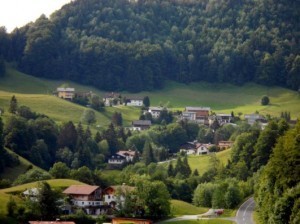 A Day in Salzburg Austria
A Day in Salzburg Austria
As I walked up the wooded beaten path up to the top of the hill I was greeted by the cool refreshing air of early morning. Forests, with their green leaves and unyielding presence, always had a special place in my heart. It is during times, when I am surrounded by nature, that I truly feel alive and connected with the world. So when I finally reached the top of the hill I was greeted by a wonderful site that would stay with me for the rest of my life. When I looked at the ground below and in front of me all I could see for miles was green hills full of trees, small clumps of houses, and the bright blue sky filled with just a few white fluffy clouds. The fairytale like scenery was all I could ever hope for in a place, and it was in that moment that I completely fell in love with Salzburg Austria.
Having grown up in the city I always looked forward to the days when my family and I would go somewhere far from the same old every day buildings and scenery that I knew. I loved the idea of experiencing new cultures, landscapes, and atmospheres thrilling and exciting and ultimately ended up becoming my inspiration to travel to new places. Because my family also loved to travel I have had the ability to visit many different places. But I have to say that one of the best trips I have ever went on did not occur till a little over a year ago when I decided to go on a school trip to Europe during the summer of 2012. While on this trip I was able to visit three different countries, Germany, Austria, and Italy, the most memorable of them being Austria.
When I first boarded the flight to Europe I had no idea what was in store for me. Having never been to Europe before, I had no idea what to expect. So when the time came that my fellow students and I finally arrived in Salzburg Austria I was overwhelmed at how beautiful the area was. Compared to Rome, with its never ending buildings, Salzburg was open and spacious making it easier to get around and to explore the area. The next day we traveled to an even smaller town in Salzburg that was right by an old salt mine, which people can still visit today. Because it was such a small town there were not very many people there and the people we did see wore clothing such as Austrian styles suits and dresses. Before we went into the salt mine we were given time to explore the town. As we walked around the town the rich culture could be seen everywhere, in the houses, the church, and even in the people. For example, the architecture of the church was elaborate, with its bell tower and brick walls. The style was also very different compared to most churches in Indiana and while I was not able to see the inside of the church, because there was a service currently taking place, I’m sure the inside would be just as elaborate as the outside. However, my favorite part of exploring the town was seeing the scenery, which was so vastly different from where I grew up. Where Indiana was full of plains and farmland, Austria was full of hills and trees. The enormous difference in landscape amazed me to no end and I could not help but feel another other than awe at its beauty. One moment that I’ll never forget is standing on top of one of the many hills and peering out at the land that seemed to go on forever with its multitude of hills, trees, and houses. It was scenes like this that made me truly appreciate the world we live in because unlike many of the other places I visited on that trip, this place was void of the pollution, clutternes, and overall business of big towns and cities.
Salzburg Austria is mainly known because of its role in the Sound of Music, and for being the birthplace of Beethoven. The Sound of Music had always been one of my favorite musicals so when I first discovered that Salzburg was where the Sound of Music was filmed I was incredible exited to be able to see Salzburg for myself. However, Salzburg is much more than that. It’s wonderful scenery felt almost too good to be real and it’s culture and history was fascinating to learn about. Being both a historical and scenic town Salzburg had everything I could want in a travel destination. Salzburg will always be one of my favorite places to visit.
About the Author: I’m Alexis Albrecht. I was born in the United the States and have lived there ever since. I am currently a student at Anderson University and I love the outdoors and traveling. One of my many goals is to be able to travel to every continent in the world.
The post A Day in Salzburg Austria appeared first on We Said Go Travel.
December 8, 2013
Budapest: This Buda’s For You
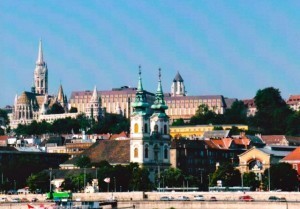 The minivan motored over an elegant stone suspension bridge, up a hill and arrived in Buda at what had to be a former Habsburg hub. I looked out the closest window and saw an especially stately palace adorned with marble statues, wrought iron gates, towers and spires. The tour guide began to speak, and I waited to learn which significant Hungarian landmark this was.
The minivan motored over an elegant stone suspension bridge, up a hill and arrived in Buda at what had to be a former Habsburg hub. I looked out the closest window and saw an especially stately palace adorned with marble statues, wrought iron gates, towers and spires. The tour guide began to speak, and I waited to learn which significant Hungarian landmark this was.
“There are 16 McDonald’s throughout the Buda and Pest metropolitan areas,” said Gabriella, a graduate student from Greece who was translating the guide’s commentary, since I was on a tour of Budapest conducted entirely in Greek.
“Huh? Where is there a McDonald’s?” I thought. However, the seriousness of Gabriella’s tone convinced me she had just relayed a legitimate cultural tidbit.
Meanwhile, the tour guide, along with the other passengers, including Iga, a woman traveling with her seven-year-old daughter, Katerina, as well as her parents and sister, all turned to assess my response. Aside from Gabriella and her friend, Marilena, none of them spoke English. I nodded as if I had been waiting for this very information since leaving the United States and my beloved Big Mac.
Earlier that day, when I found out the tour was literally going to be completely “Greek to me,” I was apprehensive. But the excursion, provided by Malév Hungarian Airlines, on my layover from Athens to Amsterdam was free. Plus, who wants to spend nine hours in an airport?
Fortunately, Gabriella and Marilena had attended a business school in London, and they were anxious to refresh their conversational English.
As the minivan left the Habsburg hood, we passed more buildings of lesser stature that perhaps were not as critical to the Austro-Hungarian Empire, but they were impressive nevertheless. I turned to Gabriella.
She moved her head from side to side. “The city’s main TV network is headquartered in this building on the right,” she said tapping on the van’s window.
“And the cables for cable television were just installed last year,” Marilena added. Again, I felt compelled to nod.
Continuing to translate the This-Buda’s-For-You tour, Gabriella and Marilena were either impressed by Budapest’s recent embrace of technology, convenience and cholesterol or they offered the information they guessed most suited my American tastes. It was quite considerate of them.
Finally, the tour guide stopped the minivan, so we could get out and look around. With Gabriella and Marilena, I wandered around a square that had several souvenir shops. I still had no idea about my surroundings, but I knew beneath my feet lay hundreds of lines of television cables.
After leaving the shops, we climbed the stairs of a building to a balcony that overlooked the rooftops and buildings of Pest, which of course, included several of the 16 McDonald’s.
We rejoined the others. Iga had spread out a blanket on a bench and arranged the food she had packed. I hadn’t even changed out of my beach clothes from the previous day when I left Greece, let alone stopped for traveling snacks.
Iga spoke to me in Greek while pantomiming, “please, share this bounty with us.”
“Efharisto,” Thank you. I nodded.
Her daughter Katerina, who looked like an ethereal supermodel in the making with her pixie haircut, slight frame and crystal blue eyes, brought me something in aluminum foil.
It was a crusty, flaky filo product stuffed with spinach and cheese. Consistent with the day, I was looking at an unidentified object. But I was hungry and it turned out to be an amazingly delicious Hot Pocketish sandwich. For dessert, they gave me honey-laden baklava. Katerina had scooted over to me on the bench. I said “efharisto,” again.
Looking at Gabriella, Katerina mentioned something and giggled. Gabriella told me that Katerina found it funny that all I could say in Greek was “thank you.” Through Gabriella, I told Katerina I actually knew the Greek alphabet. In a moment of silliness, I sang her the version I had learned courtesy of Delta Gamma, my college sorority.
For a minute, as everyone sat in silence, I thought I had offended them. Then my new friends began to laugh hysterically. Clearly, the Greeks got a kick out of the Alpha Beta Gamma ditty.
The tour guide, who had been smoking cigarettes and consulting a map, came over, pointed to his watch and motioned for us to get back in the minivan. Before complying, we convinced him to take several group photos. Gabriella, Marilena and I exchanged addresses. Iga handed me some of the tinfoiled leftovers, and Katerina gave me a big hug.
I still didn’t know what I had actually seen that day, but I did know that I had an adoptive Greek family, and I could always eat a McDonald’s hamburger and fries while watching HBO the next time I was in Budapest.
About the Author: A freelance writer, teacher and traveler, Stephanie Glaser studied in the Netherlands during college, and more recently, taught high school in Adelaide, Australia as an exchange teacher. Currently, Glaser lives with her family in Colorado where she teaches public speaking and writes about her travel blunders for her blog Travel Oops.
The post Budapest: This Buda’s For You appeared first on We Said Go Travel.
Scotland: The Heather and the Fern
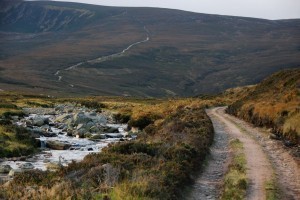 A pile of travel diaries sits on my desk. Most are mine, two are not. My grandfather’s 1937 and my mother’s 1951 diaries augment my stack. All New Zealanders of Scottish descent, it is 150 years since our ancestors emigrated but we have all felt the pull to Scotland. The cat jumps on my desk and knocks the pile. My diary from 2009 falls open …
A pile of travel diaries sits on my desk. Most are mine, two are not. My grandfather’s 1937 and my mother’s 1951 diaries augment my stack. All New Zealanders of Scottish descent, it is 150 years since our ancestors emigrated but we have all felt the pull to Scotland. The cat jumps on my desk and knocks the pile. My diary from 2009 falls open …
The land rover bumps and lurches over the uneven ground as we grunt up the hill. Mike the ranger turns to make sure we’re not getting too battered and bruised and in his soft Scottish burr assures us that we’re almost there – he thinks – he hasn’t been to this area of the estate before. While he stops to consult his photocopy of a Victorian map we gaze around at the hills of Glen Tanar.
It’s spring in the heart of Deeside, Queen Victoria’s favourite holiday destination, not far from Balmoral. We’ve seen daffodils and crocuses on our trip up the valley from Banchory but there’s a nip in the air; it is the Highlands after all. ‘Over there’ my sister calls excitedly and we see above us on the hill the remains of a small hamlet. Pulling up we get out and wander around. The Highland air blows crisp and cool. The ruins feel abandoned and sad, but there is beauty in the lichened grey stone. The walls around the perimeter remind us of those in Central Otago.
These are the remains of Walternaldie the birthplace of our great great grandfather, his father and how many before him? Huddled in our thick coats we gaze over the fields, down the valley to the river Dee below. The wind gently whips and whistles as we feel the isolation of this place and meet the family ghosts. We imagine what life here was like and can almost smell the peat fires and oatcakes cooking. The black faced sheep which were the livelihood of so many highlanders after the Clearances are everywhere, hardy but scrawny. They watch us as we nibble the buttery homemade shortbread and drink the flask of coffee provided by the estate’s cook.
Back down the glen to Correyvrach which sits at the foot of Mt Keen on the old drovers’ route from Paisley to Aberdeen. Here our forebear moved not long before seeking his fortune in Aberdeen and then emigrating. Mt Keen is popular with today’s adventurers, the most easterly of the 282 Munros to be ascended and ticked off the list by the keenest climbers. There are still patches of snow on its lower slopes; it looks bleak and barren. The Scottish palette of colours – browned heather, yellow green tussock with the blue sky and grey stones gives the area a haunting beauty.
Further along the Dee River, clear and cold, flows merrily with a stone bridge leading to the last remaining portion of an ancient Caledonian pine forest. The sun is out and the water twinkles as Mike tells us of the efforts being made to preserve what is the only one of its kind in the UK.
He drives us back to the Glen Tanar homestead and modern day Scotland. We are entranced by the 19th century ball room, popular for weddings we are told. It has tartan curtains and a parquet floor as well as stags’ heads on the walls and over 600 antlers decorating the ceiling. There are masses of books, a grand piano and cosy armchairs. It exudes an air of comfortable, almost homely elegance. This is a far cry from the ruins we have just visited.
We climb into our car and head off back down the glen, feeling grateful to those ghosts. Grateful that they could leave this beautiful place, their home and their family. Grateful they did leave. Grateful we could return and experience it.
I push the cat down, close the diary and step out into the bright New Zealand sun.
About the Author: Clare Gleeson is a New Zealand historian, librarian and travel writer who enjoys exploring her own country as well as those further afield. She has a travel blog so you can read more.
The post Scotland: The Heather and the Fern appeared first on We Said Go Travel.
Travelers Changing the World: Redistributing Wealth and Finding Peace
If the company you travel with changed its philosophy and the way it does business, and improved the way the money was distributed from your vacation, you could fight inequality just by going on vacation. I am also a firm believer that there is no faster path to peace than people getting to know one another. From Looptail by Bruce Poon Tip
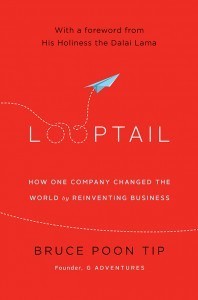 After reading Looptail, I immediately wrote to G Adventures on Facebook and said, “If I had not left my job 17 months ago to wander the world full-time, I would quit today and come work for your company.” I have worked in travel since 1996 and I am so impressed with the passion, dedication and purpose of Poon Tip and his companies, G Adventures and Planeterra. I agree with his subtitle “ ,” and look forward to sharing a bit of his story with you.
After reading Looptail, I immediately wrote to G Adventures on Facebook and said, “If I had not left my job 17 months ago to wander the world full-time, I would quit today and come work for your company.” I have worked in travel since 1996 and I am so impressed with the passion, dedication and purpose of Poon Tip and his companies, G Adventures and Planeterra. I agree with his subtitle “ ,” and look forward to sharing a bit of his story with you.
At G Adventure, their goal is “giving the best customer service and changing people’s lives,” both those who go on their trips and the local people they work with around the world. “According to the United Nations Environment Programme (UNEP), out of every hundred dollars spent on vacation by a tourist from a developed country, only five dollars stays in the destination’s economy.” Poon Tip set out to change that dynamic and did it with passion and purpose.
He is a responsible and accountable leader who has recreated himself and his company several times to match his vision. From learning to sell miniature rabbits and newspapers as a child, to being a gigantic travel brand, he uses his natural curiosity to explore the world, reimagine group travel and expand his ability to change lives through his innovative projects.
G Adventures draws customers from over 160 countries and develops “community tourism,” building adventures around terrific tours that generate local benefits for local people. While I had heard of G Adventures, I thought they ran inexpensive group tours for young people. I learned they have eight styles ranging from a seven-day $500 dollar Amazonian home stay to high-end small-ship cruises in Antarctica. I would never have guessed that they have “fifteen thousand departures to more than one hundred countries every year” while “lifting an increasing number of people out of poverty.”
His company is a “social enterprise–a for-profit company that uses business skills to solve social issues like environmental sustainability and economic inequality.” He is changing the world by how he chooses to do business. There often seems to be a tension between for profit companies and non-profit companies as if making money is evil and it is not possible to make money in a way that does save the world. How we each spend our tourism dollars is a vote or a choice.
“According to the UNWTO (United Nations World Tourism Organization), in 2012 the world surpassed 1 billion tourists for the first time.” Staying local while traveling or using a company that makes certain the money helps families in the country is crucial to empowering communities and alleviating poverty. Poon Tip proposes that tourism could “be the greatest form of wealth redistribution that the world has ever seen” depending on how we use our travel dollars. “In the next ten years tourism will generate $10 trillion,” what “if the company you travel with changed its philosophy and the way it does business, and improved the way the money was distributed from your vacation, you could fight inequality just by going on vacation.”
George and I generally travel independently and often think carefully about where to spend our money while in a town. We prefer to stay with a hotel run by a local family rather than at a chain or a place that is foreign owned. In Lipah Beach, Bali, Wayan told us how she was glad more tourists were coming to her village. Now they have electricity and since opening her own restaurant, she has enough money to feed her family.
 Poon Tip concludes that “travel done the right way can be a vehicle to create peace through understanding and appreciation of our other cultures while making the world a little more perfect…Travel also gives us an appreciation or awareness of ourselves, which goes hand in hand with being able to appreciate others. How can we ever understand what we are and where we belong in the universe if we haven’t experienced anything outside of our own nation, culture, or history?”
Poon Tip concludes that “travel done the right way can be a vehicle to create peace through understanding and appreciation of our other cultures while making the world a little more perfect…Travel also gives us an appreciation or awareness of ourselves, which goes hand in hand with being able to appreciate others. How can we ever understand what we are and where we belong in the universe if we haven’t experienced anything outside of our own nation, culture, or history?”
Ready to take your next adventure, participate in alleviating poverty and create peace? I look forward to seeing you in Asia and highly recommend Looptail for changing your own business and the planet!
This review first appeared in the Huffington Post.
About this Review: Lisa Niver Rajna is co-author of Traveling in Sin, co-founder of We Said Go Travel and has been on the road with her husband, George, since July 2012.
The post Travelers Changing the World: Redistributing Wealth and Finding Peace appeared first on We Said Go Travel.
Srinagar & Kashmir, India: How I Fell in Love!
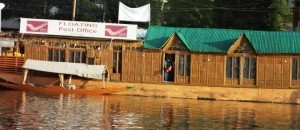 They say there is no perfect or worst time to visit the magnificent valleys of Kashmir and Srinagar. And, as per my 10 day family trip experience, I now believe in every word of that saying and the endless efforts that authors and poets have made to describe the place so far.
They say there is no perfect or worst time to visit the magnificent valleys of Kashmir and Srinagar. And, as per my 10 day family trip experience, I now believe in every word of that saying and the endless efforts that authors and poets have made to describe the place so far.
My trip started with a train journey from New Delhi, the capital of India, to Udhampur, a clean and quiet station, before we went on a 5 hour long drive to reach our first destination – Srinagar. Even though I was 5 hours away from reaching our destination, the freshness of air and the tranquility of the environment had already filled my heart with a feeling so different hat no words can truly serve justice to it. The 5 hour road journey had a few stops- a local dhaba (restaurant) for breakfast and tea, a mid-stop for stretching our legs and for me also to bring out the photographer in me.
We had been pre-booked on a houseboat. Upon reaching Srinagar, we were welcomed by our hosts. Quite opposed to my first two lengthy journeys to reach so far, this time we were shown to our compact Shikara which was our only way of commuting between the house boat and the land.
I often wondered why, of all the places, this place is known as the “Heaven on earth”. I got my answer on the very first night. After having travelled so long and suddenly transitioning from a chaotic busy life in New Delhi to this picturesque and serene land of astonishing sceneries and warm people, we decided to eat an early dinner and go off to bed. Lying on my bed in the darkness of my room (which I had to had to share with my sister!!), I only could hear three things – the tick tock of my watch lying besides my pillow, the rhythmic flow of the waves created due to whatever scientific reasons, and the endless thoughts that came to my mind that night about what it actually means to be “at peace”. I could never be more thankful to my mother for planning this trip (5 months in advance!) and for reminding me every weekend thereafter that I had to apply for leaves.
I have never had a better refreshing morning in my life than the one that I had the next day (and all the other 9 days). For the first time in life, I didn’t want to waste a single minute more in my bed. So, I had everybody ready as soon as I could and we left on a tour of the city. We visited some of the most beautifully preserved and carefully maintained Mughal gardens like the Shalimar Bagh and Nishat Bagh and of course the Royal fountains called as Chashma Shahi. Looking at the splendid craftsmanship of these places made me think why does anybody need a degree on art to be called an artist?! After all not all of these craftsman who made these masterpieces were degree holders or even educated.
Having visited a lot other places in and around Srinagar like Jama Masjid (mosque), Sonmarg, Avantiswamin Temple, and Pehelgam, we were finally coming to an end of the trip. Though I had a nice paying job, bunch full of insane but amazing friends, a cute Labrador, my cozy bed and a real world waiting for me back home but I just didn’t feel like waking up from this movie-like dream I was living in for those 10 days.
Having partied crazily on the beaches of Goa to have played Volleyball on the banks of river Ganges in Rishikesh, I finally picked the top favorite on my “places to visit again before I die” and that has to be Srinagar. It’s not because of the marvelous beauty or the amazing hospitality, it’s not even because of the enriched culture or the revitalizing energy that the surroundings carry but if someone really wants to know what is love then they must visit this place because that is what will happen when you do- you will simply fall in love.
About the author: Aditi Roy: I am 28 years old and currently based out of Kolkata. I was born and raised in New Delhi, India in a family full of lively and fun-loving people. As a frequent traveller, I have travelled most parts of India. I am an Academic Content Developer and have an undying passion for only two things in life – travel and writing. Visit me on Facebook.
The post Srinagar & Kashmir, India: How I Fell in Love! appeared first on We Said Go Travel.
December 7, 2013
Navigating NYC & Nicaragua
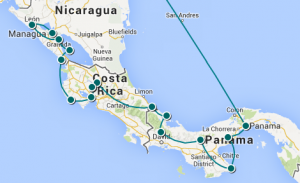 We Said Go Travel Latest News: Navigating NYC & Nicaragua
We Said Go Travel Latest News: Navigating NYC & Nicaragua
Our third and final country for Central America is Nicaragua. After two weeks in Panama, 10 days in Costa Rica and a few weeks in Nicaragua, we are on our way back to Malaysia. Being able to speak Spanish and communicate easily has been extremely helpful and fun.
Our few days in San Juan Del Sur was relaxing but this popular surfing destination does not actually have surfing. You have to take a shuttle to the surf areas. I enjoyed it but was surprised that no one had mentioned that seemingly key fact to us. A highlight of the trip was viewing both Volcanoes: Concepcion and Maderas while kayaking near Merida on Ometepe. (see photo below) We walked from Playa Santa Domingo to Balgue and from Santa Cruz to Merida. While staying in Altagracia at Hotel Centro, we enjoyed the pechuga ala plancha and a local festival. On Nov 18, the saint Santa Domingo was returned to his church with drums and fireworks as the final parade in the six-day festival.
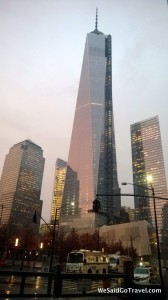 From Ometepe, I went via Managua to fly to New York City(see photo below) to visit family and friends and celebrate Thanksgiv-akah! George traveled to Granada to enjoy the colonial town, view volcanic smoke in Masaya and we met up in Leon!
From Ometepe, I went via Managua to fly to New York City(see photo below) to visit family and friends and celebrate Thanksgiv-akah! George traveled to Granada to enjoy the colonial town, view volcanic smoke in Masaya and we met up in Leon!
Our third travel-writing contest had over 320 writers! Our three contests this year have shared the stories of over 500 Writers. Thank you to everyone for your participation! We will continue to publish all the entries and expect to announce the winners in January. Click here to read all the entries so far!
Thank you to Nokia who have shared a Nokia Lumia 925 with us to trial on the road for photos, videos and social media sharing. We have been in one article and written another for them. I really love this phone, the photos and video are truly incredible!!
NEW VIDEOS: Hula Hooping at the Palau Government House, Swing Bar Fire Hooping, Koh Samui Thailand, Hula Hoop Show at Niki Beach, Koh Samui, Thailand 2013
RECENT ARTICLES in the Huffington Post: Swimming with Whale Sharks who are as big as school buses in Cebu, Philippines, Secure Attachment: Do Good teachers Need it?, Who’s Psychotic Next about Pete Townshend.
Last month we had some landmarks! On Nov 7, we had our 1001st post on the website, our YouTube channel went over 150,000 views and we joined Instagram. We hope to see you on any and all social media networks.
We appreciate all of you who read our newsletters, articles, website and BOOK! Thank you to everyone for your support of our journey and all our writing. Connect with us on Facebook, Google+, Instagram, LinkedIn, Pinterest, SlideShare, Twitter, and YouTube.
We hope you enjoyed Thanksgiving, Chanukah and Safe Travels! Gracias! More from MALAYSIA soon!!!!
Lisa and George (Click here to sign up for this newsletter. )
The post Navigating NYC & Nicaragua appeared first on We Said Go Travel.
Tanzania: Our Doc
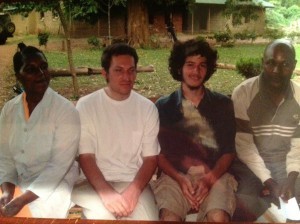 Our guide raised the roof of the jeep. Literally. It was not a pop- up roof, but needed to be lifted off the car to rest on four metal legs. The metal roof floated above our heads so we could stand and see the animals.
Our guide raised the roof of the jeep. Literally. It was not a pop- up roof, but needed to be lifted off the car to rest on four metal legs. The metal roof floated above our heads so we could stand and see the animals.
I had chosen to celebrate my 50th birthday on safari in Tanzania, with my husband Avi, and my young adult sons, Yshai and David. Lake Munyara was our first stop.
“Is this thing safe? It doesn’t look very sturdy”, questioned Yshai, the older of my sons.
The guide assured him.
“It is very very safe. It never fell, ever.”
We drove past the guard station in the late afternoon. This was our first view of the African Animal Kingdom. We heard screeching monkeys who scurried in and out of our line of vision. Their white derrières looked like vanishing blurs in our photos. We were standing, eagerly scanning the landscape; it was a combination of lush greenery, verdant forests, and open Savannas. It was beautiful. And we hadn’t even reached the lake.
Avi was the first to sit down, then Yshai, then me. That’s when I heard a noise from the back of the jeep. I turned around and saw that the roof that “never fell, ever” was sitting on David’s shoulders. His head was nowhere to be seen. I could only see his long, lank headless body. Yshai and I, between frenzied, panicked yells, tried to lift the roof. Adrenaline helped us succeed. Slowly David’s neck and then his head emerged. He looked dazed and had blood on his forehead.
“We need a doctor” I yelled. “He could have a concussion.”. Or go into a coma, or something worse” I thought.
David slowly brought his hand up to the back of his head, and pulled it away. The fingers were painted with blood. I immediately thought of his blood pouring out and sapping his strength. Yshai, Avi and I quickly inspected the back of his head through the layers of hair. The wound looked small but significant. The guide did not move.
“We need a doctor” I yelled louder. The guide appeared to awaken, and wanted to continue the safari as if nothing had happened.
“Turn the car around. Your roof fell on David’s head. We need help”. He finally understood and complied.
The guards at the station recommended a doctor not too far away. I smiled at them in gratitude. We left the park. The guide drove quickly.
The young, thin, black, African doctor, Steven, graduated from medical school in Moshi, Tanzania. His hospital was small; a building with three rooms, a structure resembling a portable trailer, a big lawn and a nurse. The doctor and nurse spoke English and wore white coats. He looked at David and gave his verdict.
“He needs stitches.”
We were in Africa, land of dirty needles, unsanitary condition and AIDS. We were living a tourist’s worst nightmare.
“Are you sure? Avi and I asked simultaneously.
“It’s advisable” he responded.
We agreed to the stitches, but no injections. David could hold my hand and squeeze his pain and discomfort into it.
“He’s young, he’ll be fine”, assured Dr Steven as he opened a drawer. I expected to see unprotected needles and thread come sliding out of it, ready to pierce my sons scalp.
Out came a long box. Dr Steven opened it carefully, and lovingly pulled out a clean, new, shiny pair of surgical gloves, which he proceeded to pull over his hands. They fit like a glove, as gloves should. I looked at Avi and Yshai and realized none of us were breathing. I set an example with a loud sigh.
Next came another box with a sewing kit, all wrapped in crinkly new plastic. He quietly warned my son, then started to sew. My kids have been patched up before, with large, crude stitches. But in his primitive surroundings, Dr. Steven performed artistry. In two short pulls of the thread with a metal, staplelike thread pulling gadget, David’s scalp was back in perfect condition. Dr Steven was our hero. Dr Steven was the best doctor in the world. Thank you, Dr. Steven.
Our African doctor put a clean bandage over the wound, attached it with crisscrossed adhesive tape to David’s hair, gave us two different kinds of medication to prevent infection and shook our hands. We asked how much it would cost.
“Twenty dollars would be fine”, he said. “The hospital would appreciate whatever you can give.”
We gave him fifty. And thanked him profusely.
“My pleasure” he replied.
We stopped off on our way to the airport after our successful safari expedition. We wanted only Doctor Steven to remove David’s stitches. And we wanted to express our gratitude to the world’s best doctor.
About the Author: Rona Amichai lives in Los Angeles. She is a speech language pathologist who loves to travel and write about her experiences. She can be reached through Facebook.
The post Tanzania: Our Doc appeared first on We Said Go Travel.
Sailing and exploring Peloponnese
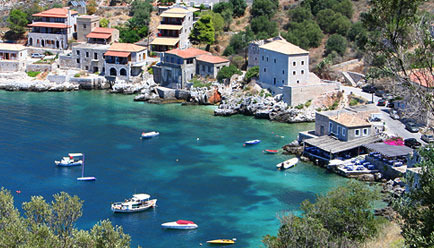
Small town on Peloponnese
The Peloponnese is a mystical peninsula in Greece that many Greek gods and heroes used as their playground. Today, many historical sites such as temples, cities, palaces and fortresses are scattered across the landscape as far as the eye can see. Alongside the historical sites, snow capped mountains dominate the skyline along with vineyards, farms and citrus groves. Hospitality is at the forefront of society today and the Mediterranean cuisine is among the best in Europe. For centuries, perhaps even millenniums the Greeks fought to the death for this peninsula nirvana. Today, the Peloponnese people welcome tourists with open arms, wanting to show off their little piece of heaven.
The peninsula is many times mistaken as an island but is connected to the Greek mainland in two places. There are many ways to get to the peninsula, the most popular being a short ferry ride from Athens to the east and via road in the far north. Once on The Peloponnese, small and charming towns older than the USA open their doors for business in the spring and summer along the Aegean, Ionian and Myrtoon Seas and are full of history. The most famous historical city on The Peloponnese is Olympia, where the first Olympic games were held almost 3,000 years ago. Besides hosting the first Olympics, The Peloponnese is home to Sparta, made famous by gladiators that defended the peninsula for centuries.
The most popular method of attacking Greece and the peninsula in particular was to sail there. Hundreds, if not thousands of years ago, invaders sailed across the Aegean sea to the peninsula. Like the invaders years ago, sailing is still the most popular way of seeing this beautiful part of the world. Unlike thousands of years ago, locals embrace tourists with open arms, wanting to show off their historically rich part of the Mediterranean Sea.
Sailing Greece and Peloponnese in particular is on the checklist of places to sail for sailors all around the world. The country as a whole is world renowned for the scenery, cuisine, history and hospitality of the people whom inhabit the area.

Sailing the Peloponnese coastline
The post Sailing and exploring Peloponnese appeared first on We Said Go Travel.
Dharamsala, India: Goodbye
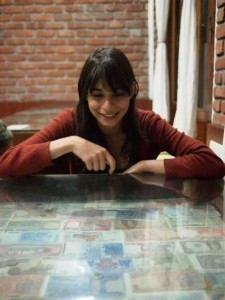 We leave at four in the morning. Guman, whose love for genuine conversation has managed to overcome the fact that I cannot understand Hindi and he cannot speak English, is telling me how Guru (teacher) is god. It is apparently written in the Bhagvad Gita. Those from whom we have the opportunity to learn gifts us something priceless. I pull my coat tighter, and watch the stars. They flash by in the hundreds; spots of light pricked into the night sky, splayed over its expanse, the kind you would never see in Mumbai.
We leave at four in the morning. Guman, whose love for genuine conversation has managed to overcome the fact that I cannot understand Hindi and he cannot speak English, is telling me how Guru (teacher) is god. It is apparently written in the Bhagvad Gita. Those from whom we have the opportunity to learn gifts us something priceless. I pull my coat tighter, and watch the stars. They flash by in the hundreds; spots of light pricked into the night sky, splayed over its expanse, the kind you would never see in Mumbai.
I have had my last conversation class that evening. Five Tibetan refugees gather around me in the small office in Dharamsala and lean in closer so that my unfamiliar words are easier to understand. We speak about learning. The monk in front of me looks old, but is only in his thirties. Two wisps of beard sprout at the corner of his lips. He tells me that learning is the key to unlocking the world. Tibet was once conquered because it was ignorant; now the world has come to its doorstep and it has the opportunity to go discover, an opportunity he wants to take full advantage of. He asks me the same question. What does learning mean to you? Learning, I say, is constant change. Accepting that all you see and acquire will seep into your bones, dormant or active, and, however grandly or minutely, change you.
I am given two Tibetan white scarves. They place them around my neck, as if in ceremony. LHA hands me a scroll that says Thank you for Volunteering and I pose with it. Dukthen, the beautiful, mischievous Tibetan I have been helping with Contact Magazine, hunts through a rickety cupboard to give me a volunteering T-shirt. “Blue?” she asks, holding up the options, “Or Red?” “Blue,” she decides, before I can reply. I tell her this is unnecessary. She smiles. “So that you remember us.” Khenrab, the monk I have been tutoring for a month, gifts me blue bracelet. Students tell me to come back in April when the weather is nicer, because Mumbai is so close. I smile, I nod and go back to my budget room to pack.
The scenery before me has changed. We are driving to Chandigarh, where my flight is waiting for me. The sun is rising and the horizon is painted purple, fading into the colours of the rainbow and then the sky. Black silhouetted trees stamp the air with their impressions. The air is cold. India is beautiful. In a way I could not have understood among the cars in Mumbai. In a way I could not have understood through the sadness of my heart.
The ageless monk asks my last question. The clock has struck five, and Jigme has knocked on the classroom door. Time’s up, pack up, come back tomorrow. But the monk leans forward. “How do you think we can overcome the sufferance of life?” This is a question he has asked me before. I say, genuinely, I do not know. I am only twenty-two. He nods carefully, like I have said something wise. Then he wraps up his own wisdom and gives it to me to keep, a parting gift. “An ancient Indian Swami once say, ‘If the problem can be overcome, there is no need to worry. If it cannot be solved, there is no use in worrying.’ ”
About the Author: Tashan Mehta is a writer and a keen traveller, although little of her life has actually begun. Her short stories have been published in magazines like Out of Print and Notes. She rambles at The Inadequacy of Language
The post Dharamsala, India: Goodbye appeared first on We Said Go Travel.
We Said Go Travel
We Said Go Travel is a global community of over sixteen hundred writers with articles from every continent.
Stories are shared with photos and video from a perspective of the transformative power of travel. We Said Go Travel has hosted live and online events as well as travel writing contests around the world. ...more
- Lisa Niver's profile
- 57 followers



